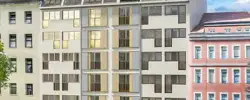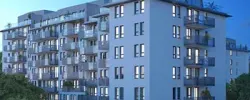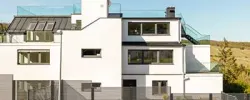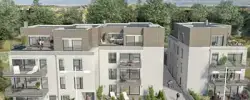Gustav-Freytag-Straße 3
Return
6.75% p.a.
Duration
36 months
Project type
Income
Distribution
Quarterly
Notice according to § 12 (2) Vermögensanlagengesetz
This investment involves considerable risk and may result in partial or total loss.Project Presentation
The project "Gustav-Freytag-Straße 3" comprises the refurbishment of an imposing existing property from the 20th century as well as the optimization of the letting of the vacant residential and commercial units of the existing building. In addition, there is further potential through an attic conversion. The property is currently 86% let and has a total of 24 residential units and 3 commercial units with an existing area of around 2,950 m² (total usable area). Not only the predestined corner situation of the property is convincing, but also the central location in the Berlin district Tempelhof-Schöneberg.
The purchase agreement has been concluded and the issuer is already the owner of the property. The project currently generates around € 255,000 in annual rental income. With regard to the optimization of leasing, initial preliminary negotiations are already underway for new leases, tenant changes and corresponding renovation measures. In the course of this, higher rental income of around € 330,000 can be achieved.
The historic apartment building is located in the middle of the Schöneberg district in Berlin's Tempelhof-Schöneberg district. In the immediate vicinity are numerous local amenities such as supermarkets, restaurants and leisure facilities. Due to its proximity to the Schöneberg S-Bahn station, the location is excellently connected to the public transport network and the city center can be reached within 20 minutes. Green spaces such as the Rudolph Wilde Park and the Heinrich Lassen Park are within walking distance and invite you to linger.
Location
Welcome to Berlin
Berlin is not only the capital of the Federal Republic of Germany, but also an important cultural, scientific, research and trade fair location. With more than 30 million overnight stays, Berlin is also a tourist magnet for numerous domestic and foreign visitors, who contribute to its growing economic factor. Even though Berlin has lost its unique character as a divided city of the Cold War since reunification, the influx of visitors who appreciate the cultural diversity, the moving history and, last but not least, the broad creative and cultural offerings continues unabated.
Micro-location Gustav-Freytag-Strasse
Nothing is worth more than a good location. The project "Gustav-Freytag-Straße 3" is located in the middle of the district Schöneberg in the Berlin district Tempelhof-Schöneberg. In the immediate vicinity are numerous local amenities such as supermarkets, restaurants and leisure facilities. Due to its proximity to the Schöneberg S-Bahn station, the location is excellently connected to the public transport network and the city center can be reached within 20 minutes. Green spaces such as Rudolph Wilde Park and Heinrich Lassen Park are within walking distance and invite you to linger.
Discover the surroundings
Schöneberg is a vibrant district of Berlin's Tempelhof-Schöneberg district and can claim to have once been a real city. The exact date of Schöneberg's founding is not known. The village of Schöneberg is first mentioned in a deed of donation from 1264, according to which Margrave Otto III gave five hooves in the village to the nunnery of Spandau. The settlement area at that time was located along today's main street between Dominicus- and Akazienstraße. The name "Schöneberg" cannot be traced back to geographical origins, but was a desirable name intended to attract settlers.
Tempelhofer Field
Originally, Tempelhofer Feld Berlin was a parade and drill ground. On weekends and holidays - as soon as the military cleared the square - Berliners flocked from Berlin to Tempelhof in their thousands to spend their leisure time there. In the early 1920s, Tempelhof Airport was built there. After the airport closed in 2008, Berlin reclaimed the 386-hectare open space and one of the world's largest buildings in a central location for public use. Today, the area offers a six-kilometer bike, skating and jogging track, two and a half hectares of barbecue area, a dog run of about four hectares and a huge picnic area.
Schöneberg City Hall
Schöneberg City Hall, since 1949 the seat of West Berlin's government, the official residence of the governing mayor and the Allied liaison officers, and the meeting place of the House of Representatives, was considered a worldwide symbol of the divided city's desire for freedom during the German division. It formed the political center of West Berlin under governing mayors such as Ernst Reuter and Willy Brandt until reunification, when the Senate and House of Representatives moved to the Red City Hall in the Mitte district. The sandstone building is characterized by a 70-meter-high tower on which the Berlin flag flies. Various reliefs decorate the simply plastered facade, and the interiors contain wood paneling and typical bourgeois commissioned art of the early 20th century. Hit by several bombs during World War II, parts of the interior and the tower were restored only in a simplified form.
Schöneberg South Area
The Tempelhof marshalling yard became a typical railroad wasteland when it was gradually shut down after the Second World War. But in just 50 years, a diverse and species-rich natural oasis thrived in the middle of the big city. This jungle-like forest can now be discovered on long walks. Today, the Schöneberger Südgelände is home to numerous animal and plant species. Some buildings and structures of the railroad era are still preserved, such as the bridge master's office and the water tower. The 4,000 square meter former locomotive hall has also survived the times and is now a center of attraction for the curious, amateur photographers and artists.
Old St. Matthew's churchyard
The Old St. Matthew's Churchyard in Berlin is a historic cemetery in the Schöneberg district with many culturally and historically significant graves, which are now listed as historical monuments. The cemetery is located between Großgörschenstrasse and Monumen-tenstrasse in the Schöneberg district on the so-called Red Island. Like Kreuzberg, which is 500 meters to the east, the cemetery slopes gently down to the Berlin glacial valley with the course of the Spree River, as it is laid out on the northern slope of the Teltow River. Magnificently decorated graves from the Wilhelminian period and some 50 honorary graves of important personalities can be found in the cemetery, testifying to the city's rich cultural heritage.
Nollendorfplatz and Winterfeldtplatz
The area around Nollendorfplatz and Winterfeldtplatz has been a gay mecca since the 1920s. Here men met in the travesty locale Eldorado, where Marlene Dietrich and Claire Waldoff also enjoyed themselves. Even today, rainbow flags can be seen everywhere in Schöneberg. Many offers here are aimed specifically at the gay and lesbian public. From Fuggerstrasse and Motzstrasse to Maaßenstrasse and Nollendorfplatz, the most diverse bars, clubs, restaurants and stores make the Nollendorfkiez a "gay village. That a colorful coexistence is not a matter of course is reminded by the memorial plaque "Totgeschlagen - totgeschwiegen" ("Beaten to death - hushed up") at the subway station Nollendorfplatz. There, the gay and lesbian victims of National Socialism are commemorated.
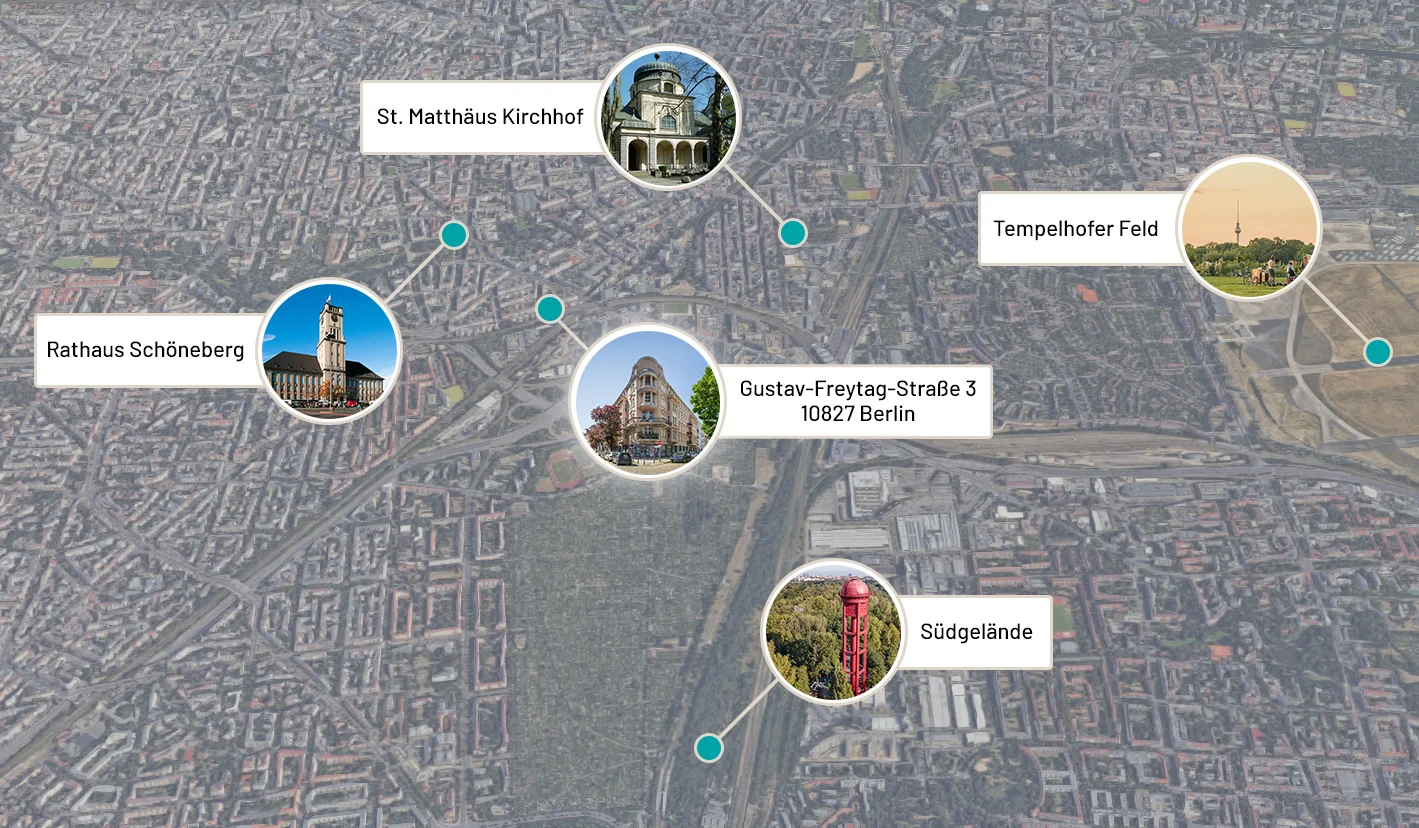
Team
WINEGG stands for architecture, aesthetics, quality, solidity, sustainability and safety. The company thinks long-term and designs top-class quality properties in the best locations, so that future generations can leave more behind.
WINEGG Realitäten GmbH was founded in Vienna in 1998. Since then, the company has made a name for itself as a forward-looking investor, developer and quality-conscious property developer that is widely respected. The company's vision: to keep an eye on reality and yet plan for the long term. So that future generations can also build their lives on a secure foundation.
From the very beginning, one of the company's specialities has been increasing the value of old buildings. Good substance and best location are the selection criteria.
Today, WINEGG has also gained a top position in the field of revitalizing old buildings, loft conversions & new building development. And has extended its commitment not only to Vienna and Austria but also to Germany (including Berlin, Leipzig & Dresden): Numerous properties, both in the area of old building development and in the area of new housing developments, have already been successfully completed.

